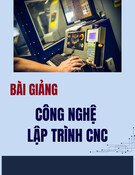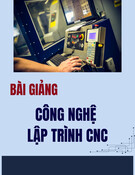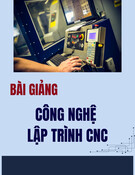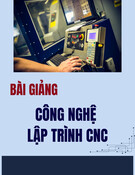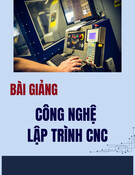ARTICLE IN PRESS
International Journal of Machine Tools & Manufacture 47 (2007) 1214–1228
www.elsevier.com/locate/ijmactool
A review on current research trends in electrical discharge machining (EDM) Norliana Mohd Abbas(cid:2), Darius G. Solomon, Md. Fuad Bahari
Faculty of Mechanical Engineering, Universiti Teknologi MARA, 40450 Shah Alam, Selangor Darul Ehsan, Malaysia
Received 15 November 2005; received in revised form 20 May 2006; accepted 17 August 2006 Available online 17 November 2006
Abstract
Electrical discharge machining (EDM) is one of the earliest non-traditional machining processes. EDM process is based on thermoelectric energy between the work piece and an electrode. A pulse discharge occurs in a small gap between the work piece and the electrode and removes the unwanted material from the parent metal through melting and vaporising. The electrode and the work piece must have electrical conductivity in order to generate the spark. There are various types of products which can be produced using EDM such as dies and moulds. Parts of aerospace, automotive industry and surgical components can be finished by EDM. This paper reviews the research trends in EDM on ultrasonic vibration, dry EDM machining, EDM with powder additives, EDM in water and modeling technique in predicting EDM performances. r 2006 Elsevier Ltd. All rights reserved.
Keywords: EDM; Ultrasonic vibration; Dry EDM; Powder additives; Dielectric; Modeling
1. Introduction
machining [1]. Materials of any hardness can be cut as long as the material can conduct electricity [6]. EDM techniques have developed in many areas. Trends on activities carried out by researchers depend on the interest of the researchers and the availability of the technology. In a book published in 1994, Rajurkar [7] has indicated some future trends activities in EDM: machining advanced materials, mirror surface finish using powder additives, ultrasonic-assisted EDM and control and automation.
(cid:2)Corresponding author. Tel.: +60 16 218 6521; fax: +60 3 5543 5160. E-mail address: chelorot@lycos.com (N. Mohd Abbas).
Electrical discharge machining (EDM) is a non-tradi- tional concept of machining which has been widely used to produce dies and molds. It is also used for finishing parts for aerospace and automotive industry and surgical components [1]. This technique has been developed in the late 1940s [2] where the process is based on removing material from a part by means of a series of repeated electrical discharges between tool called the electrode and the work piece in the presence of a dielectric fluid [3]. The electrode is moved toward the work piece until the gap is small enough so that the impressed voltage is great enough to ionize the dielectric [4]. Short duration discharges are generated in a liquid dielectric gap, which separates tool and work piece. The material is removed with the erosive effect of the electrical discharges from tool and work piece [5]. EDM does not make direct contact between the electrode and the work piece where it can eliminate mechanical stresses, chatter and vibration problems during
0890-6955/$ - see front matter r 2006 Elsevier Ltd. All rights reserved. doi:10.1016/j.ijmachtools.2006.08.026
However, the review presented in this paper is on current EDM research trends carried out by researchers on machining techniques viz. ultrasonic vibration, dry EDM machining, EDM with powder additives and EDM in water and modeling techniques in predicting EDM performances. The areas are selected because of the novel techniques employed (ultrasonic vibration and powder additives), the environmental aspect (dry machining and EDM in water) and effort towards validating and predicting EDM performance (modeling technique). Each topic will present the activities carried out by the researchers and the development of the area that brings it to the current trends. Wire EDM is also discussed in each topic.
ARTICLE IN PRESS N. Mohd Abbas et al. / International Journal of Machine Tools & Manufacture 47 (2007) 1214–1228
1215
2. Ultrasonic vibration
the EDM performance for fabricating microholes in [15]. Fabricating Nitinol was done by Huang et al. microholes in nitinol increased the machining efficiency more than 60 times without significantly increasing the electrode wear. Yeo et al. [16] investigated the limitations of microholes machining capabilities as well as current, attempts to improve micrhole drilling in UEDM. Based on theories in fluidization engineering and ultrasonic digas- sing, a method of introducing ultrasonic vibrations into MEDM processes was conceptualized and developed.
2.2. Vibration, rotary and vibro-rotary
Introduction of ultrasonic vibration to the electrode is one of the methods used to expand the application of EDM and to improve the machining performance on difficult to machine materials. The study of the effects on ultrasonic vibration of the electrode on EDM has been undertaken since mid 1980s. The higher efficiency gained by the employment of ultrasonic vibration is mainly attributed to the improvement in dielectric circulation which facilitates the debris removal and the creation of a large pressure change between the electrode and the work piece, as an enhancement of molten metal ejection from the surface of the work piece [8]. Zhang et al. [9] proposed spark erosion with ultrasonic frequency using a DC power supply instead of the usual pulse power supply. The pulse discharge is produced by the relative motion between the tool and work piece simplifying the equipment and reducing its cost. They have indicated that it is easy to produce a combined technology which benefits from the virtues of ultrasonic machining and EDM. Ghoreishi and Atkinson [17] compared the effects of high and low frequency forced axial vibration of the electrode, rotation of the electrode and combinations of the methods (vibro-rotary) in respect of MRR, tool wear ratio (TWR) and surface quality (SQ) in EDM die sinking and found that vibro-rotary increases MRR by up to 35% compared with vibration EDM and by up to 100% compared with rotary EDM in semi finishing.
2.1. Machining of microholes 2.3. Theoretical model and fuzzy logic
An adaptive fuzzy control system of servomechanism for electro-discharge machining with ultrasonic was studied by Zhang et al. [18] to adjust discharge pulse parameter in a timely manner and machining gap to optimize the machining state and to improve the machining efficiency.
2.4. Workpiece vibration
In 1995 Zhixin et al. [10] has developed an ultrasonic vibration pulse electro-discharge machining (UVPEDM) in engineering ceramics technique to produce holes material. They have confirmed by experiment that this new technique is effective in obtaining a high material removal rate (MRR). Ogawa et al. [11] proved that the depth of microholes by EDM with ultrasonic vibration becomes as about two times as that without ultrasonic vibration and machining rate increased. Thoe et al. [12] dealt with combined ultrasonic and electrical discharge machining of ceramic coated nickel alloy. They found the following: when drilling 1 mm diameter single hole using various tool materials (tungsten, silver steel, mild steel and copper) with boron carbide abrasive slurry on ceramic coated nickel alloy work piece, mild steel is found to be the most resilient whereas the other materials fail as a result of fatigue fracture or deformation. Using ultrasonic vibration during EDM greatly increased the MRR of the work piece. Wansheng et al. [13] introduces ultrasonic vibration into micro-EDM: Ti–6Al–4 V as work piece material with 32 mm thickness, carbide YG6X electrode, 20 kHz ultra- sonic vibration and 2 mm amplitude; holes with diameter of 0.2 mm and depth/diameter ratio of more then 15 can be drilled. A new method for micro ultrasonic machining has been developed by Egashira and Masuzawa [19]. The work piece was vibrated during machining and they have succeeded in machining microholes as small as 5 m in diameter in quartz glass and silicon. In the machining range, high tool wear posed a problem. To solve the problem, a sintered diamond tool was tested and was proven to be effective. Gao and Liu [20] found that the efficiency of the ultrasonic micro- EDM is eight times greater than micro-EDM when work piece material is stainless steel with 0.5 mm thickness and the electrode is tungsten with 43 mm diameter. Prihandana et al. [21] have studied the effect of vibrated work piece. They have shown that when the vibration was introduced on the work piece the flushing effect increased. They have found that high amplitude combined with high frequency increase the MRR. Yan et al.
2.5. Tool wear
[14] adopted a machining method that combined micro electrical discharge machining (MEDM) and micro ultrasonic vibration machining (MUSM). They showed that the diameter variation between the entrance and exit (DVEE) could reach a value of about 2 mm in microholes with diameters of about 150 mm and depth of 500 mm. They obtained microholes with a roundness value of about 2 mm (the maximum radius minus the minimum radius). A study on the effects of ultrasonic vibration on Yu et al. [22] have studied the tool wear during the 3D micro ultrasonic machining. They showed that the tool shape remain unchanged and the tool wear has been compensated by applying the uniform wear method developed for micro EDM and its integration with CAD/
ARTICLE IN PRESS N. Mohd Abbas et al. / International Journal of Machine Tools & Manufacture 47 (2007) 1214–1228
1216
CAM to micro ultrasonic vibration process for generating accurate three-dimensional (3D) micro cavities. 30% and the roughness of the machined surface reduced from 1.95Ra to 1.7Ra.
2.6. Ultrasonic vibration in gas 2.8. Remarks
Ultrasonic vibration EDM is suitable to produce deep and small holes products. Cu is most frequently selected as the tool electrode either in gas machining or in dielectric machining. This is maybe due to the characteristics of the material which stable under sparking condition [27]. The range of the ultrasonic frequency used during the experi- ment is between 17 and 25 kHz. Most of the experiments are evaluating on the performance of steel based work piece materials since these materials are widely used in industries. However the harder material such as alumina ceramic is also evaluated.
Fig. 1 shows the progress of method in combining ultrasonic vibration with EDM from year 1995 to 2006. The method starts with vibrating the electrode followed by vibrating the work piece in year 1999, which gains popularity from year 2003 and continues until year 2006. Zhang et al. [23] studied the ultrasonic EDM in gas. The gas is applied through the internal hole of a thin-walled pipe electrode. The result shows that the MRR increased with respect to the increase of open voltage, pulse duration, amplitude of ultrasonic actuation, discharge current and the decrease of the wall thickness of electrode pipe while the surface roughness is increased with respect to the increase of open voltage, pulse duration and the discharge current. Zhang et al. [24] developed a theoretical model to estimate the roughness of finished surface. Before that, Zhang et al. [25] found that heat generation by oxidation of the molten and evaporated steel enhances the machining efficiency and surface roughness is found to be affected by gas medium. For air and oxygen gas the corresponding values of Ra was measured to be 0.032 and 0.046, respectively.
2.7. Wire EDM 3. Dry machining
In dry EDM, tool electrode is formed to be thin walled pipe. High-pressure gas or air is supplied through the pipe. The role of the gas is to remove the debris from the gap and to cool the inter electrode gap. Fig. 2 shows the principle of dry EDM. The technique was developed to decrease the pollution caused by the use of liquid dielectric which leads to production of vapour during machining and the cost to manage the waste.
Workpiece vibrates
[14]
Tool: rotates vibrates &
vibro-rotary
[17]
Tool rotates
vibrates
Wire
up&down
vibrates
[13]
[26]
Tool
Wire
W'piece
vibrates
vibrates
vibrates
[18]
[8]
[12]
Tool vibrates
Tool vibrates
Tool vibrates
Tool vibrates
W'piece W'piece vibrates vibrates
W'piece vibrates
[25]
[9]
[19]
[10]
[20]
[22]
[21]
1995
1996
1997
1998
1999
2000
2001
2002
2003
2004
2005
2006
Fig. 1. Progress of method in combining ultrasonic vibration with EDM from 1995 to 2006.
Yu et al. [28] investigated the capability of the technique in machining cemented carbide material and compared the Guo et al. [26] studied the machining mechanism of wire EDM (WEDM) with ultrasonic vibration of the wire and found that the combined technology of WEDM and ultrasonic facilitates the form of multiple-channel dis- charge and raise the utilization ratio of the energy that leads to the improvement in cutting rate and surface roughness. High frequency vibration of wire improves the discharge concentration and reduces the probability of rupture wire. Guo et al. [8] concluded that with ultrasonic aid the cutting efficiency of WEDM can be increased by
ARTICLE IN PRESS N. Mohd Abbas et al. / International Journal of Machine Tools & Manufacture 47 (2007) 1214–1228
1217
Fig. 5. Machining time [28].
Fig. 2. The principle of dry EDM [25].
Fig. 6. Electrode wear ratio [28].
Fig. 3. Work removal rate [28].
milling third. The lowest electrode wear ratio machining was dry EDM milling (see Fig. 6).
The following sections present the progress in dry EDM based on topics: MRR and tool wear, polarity and surface roughness and improvement techniques.
Fig. 4. Electrode wear [28].
3.1. MRR and tool wear
In 1991 Kunieda et al. [29] has revealed a new method to improve EDM efficiency by supplying oxygen gas into gap. They found that the stock removal rate is increased due to the enlarged volume of discharged crater and more frequent occurrence of discharge. Then in 1997 Kunieda et al. [30] discovered a 3D shape can be machined very precisely using a special NC tool path which can supply a uniform high-velocity air flow over the working gap and MRR is improved as the concentration of oxygen in air is increased.
The mechanism for minute tool electrode wear in dry EDM was studied by Yoshida and Kunieda [31]. The tool electrode wear is almost negligible for any pulse duration because the attached molten work piece material protects the tool electrode surface against wear. From observation of the cross-section of the tool electrode surface, it was found that the tool electrode wore by the depth of only 2 mm during the early stage of successive pulse discharges since the initial surface of the tool electrode was not covered with the steel layer.
ZhanBo et al. [32] studied the feasibility of 3D surface machining by dry EDM to investigate the influence of depth of cut and gas pressure, pulse duration and pulse interval and the rotational speed of the tool electrode. The result shows that optimum combination between depth of machining characteristics between oil EDM milling and oil die sinking EDM. They found that for machining the same shape oil die sinking EDM shows shorter machining time. But because oil die sinking requires time for producing in actual electrodes, dry EDM should be more useful production. The information given in this paper is interesting and they are reproduced here for better clarity. Figs. 3 and 4 show the work removal rate and electrode wear ratio in groove machining. According to the results, work removal rate of dry EDM milling is about six times larger than that of oil EDM milling, and electrode wear ratio one-third lower. In Fig. 5, it is shown that the EDM method with the shortest machining time was oil die sinking EDM, dry EDM milling was second, and oil EDM
ARTICLE IN PRESS N. Mohd Abbas et al. / International Journal of Machine Tools & Manufacture 47 (2007) 1214–1228
1218
3.3.3. Using piezoelectric actuator
cut and gas pressure and when pulse duration 25 mm it is to maximum MRR and minimum tool wear. leads As the rotational speed increases the tool wear increases moderately.
3.2. Polarity and surface roughness Kunieda et al. [38] introduced an improvement of dry EDM characteristics using piezoelectric actuator to help in controlling the gap length. To elucidate the effects of the piezoelectric actuator an EDM performance simulator was developed to evaluate the machining stability and MRR of dry EDM.
3.4. Wire EDM
A paper entitled ‘Discussion of electrical discharge [33] recommend machining in gas’ written by Li et al. positive polarity to be employed in dry EDM because electrodes play main roles in collision and ionization and in order to ensure machining process stable at the spark discharge state, a certain gas pressure is necessary to strengthen deionization in dry EDM and to keep discharge points dispersed in gap. Zhang et al.
Furudate and Kunieda [39] conducted studies in dry WEDM. The process reaction force is negligibly small, the vibration of the wire electrode is minute and the gap distance in dry WEDM is narrower than in conventional WEDM using dielectric liquid which enables the dry WEDM to realize high accuracy in finish cutting. No corrosion of the work piece gives an advantage to dry WEDM in manufacturing high precision dies and molds. Wang and Kunieda [40] agreed that WEDM is applicable for finish cut especially for improving the straightness of the machined surface. Traveling tool electrode can remove debris from the working gap even in atmosphere and by utilizing this process as finish-cut the straightness obtained along the work’s thickness direction is better than that machined in water [41].
[34] developed a theoretical model to estimate the roughness of the finished surface. Experiments which have been carried out using AISI 1045 steel as work piece material and copper as the electrode show that the roughness of finished surface increases with an increase in the discharge voltage, discharge current and pulse dura- tion. Curodeau et al. [35] proposed a new EDM process involving the usage of a thermoplastic composite electrode and air as dielectric in order to perform automated polishing of tool steel cavity. The process can reduce 44 mm Ra surface finish to 36 mm Ra.
3.3. Improvement of the technique
Kunieda and Furudate [42] found some drawbacks of dry WEDM which include lower MRR compared to conventional WEDM and streaks generated over the finished surface during the studies in high precision finish cutting by dry EDM. The drawbacks can be resolved by increasing the wire winding speed and decreasing the actual depth of cut. 3.3.1. Dry ultrasonic vibration electrical discharge (dry UEDM) [25] Zhang et al. 3.5. Remarks
To the best of our knowledge,
the earliest paper mentioning about the technique was published in 1991. However, paper entitled ‘Electrical discharge machining in gas’ which was published in CIRP Annals in 1997 was referred for 18 times [43]. Researchers from Japan and China give major contribution for the progressing research in this area. The characteristics of dry EDM list by Kunieda [44] are:
initiated a new method which is ultrasonic vibration electrical discharge (UEDM) machin- ing in gas. The experimental result shows that the increase in open voltage, pulse duration, amplitude of ultrasonic vibration and decrease of wall thickness of the pipe can give an increase of the MRR. He also found that oxygen gas can produced greater MRR than air. Then theories of ultrasonic vibration in increasing MRR were introduced [36]. On further investigation, Zhang et al. [23] found that MRR with the same surface roughness UEDM in gas is nearly twice as much as EDM in gas but less than the conventional EDM.
(1) Tool electrode wear is negligible for any pulse duration. (2) The processing reaction force is much smaller that in 3.3.2. Dry EDM milling conventional EDM. (3) It is possible to change supplying gas according to different applications. (4) The residual stress is small since the melting resolidi- fication layer is thin.
(5) Working gap is narrower than in conventional EDM. (6) The process is possible in vacuum condition as long as there is a gas flow.
(7) The machine structure can be made compact since no working basin, fluid tank and fluid circulation system needed. The dry EDM technique is improved by Kunieda et al. [37] when they introduced the high speed 3D milling by dry EDM. The MRR increased when the discharge power density on the working surface exceeds a certain threshold due to thermally activated chemical reaction between the gas and work piece material. The maximum removal rate obtained was almost equal to that of high speed milling of quenched steel by a milling machine. Most researchers deal with steel as work piece when investigating the perfor- mance of dry EDM [30,37,38].
ARTICLE IN PRESS N. Mohd Abbas et al. / International Journal of Machine Tools & Manufacture 47 (2007) 1214–1228
1219
Fig. 7. Research studies conducted in dry EDM.
aluminium (Al), crushed glass, silicon carbide (SiC) and molybdenum sulphide with different grain size. Al powder has been reported to give mirror finish for SKH-51 work pieces, but not on SKH-54 work pieces. They suggested that it is important to have the correct combination of powder and work piece materials and an understanding of the fundamental mechanisms affecting such combinations will promote the applications of PMEDM to feasibly produce superior surface finish and properties of compo- nents using EDM.
The development of the technique concerns more on to increase the MRR since the MRR is lower compared to conventional machining. Fig. 7 shows the proportion of research studies conducted in this area. It can be seen that dry EDM can be applied to EDM, UEDM, WEDM, EDM milling and a few other techniques. 34% of the papers referred deal with EDM technique. This technique should be supported and more investigation should be made since it helps to save the environment. The progress in dry EDM research is shown in Fig. 8. It can be seen that dry EDM has many advantages over oil EDM. The history of the developments taking place in dry EDM can be observed.
4. Powder additives When investigating the surface modification of SKD 61 with PMEDM, Yan et al. [49] revealed that the corrosion resistance and surface hardness were improved by adding the proper powder into dielectric. Silicon powder was used to assess improvement by Pecas and Henriques [46] through quality surface indicators and process time management over a set of different processing area. The result shows that 2 g/l of Si concentration, smooth and high reflective craters were achieved with average surface roughness (Ra) depends on the area and varies between 0.09 mm for 1 cm2 and 0.57 mm for 64 cm2 electrode. The polishing time has a greater effect on decreasing the surface roughness. Furutani et al. [50] studied a deposition method of lubricant during finishing EDM to produce parts for ultrahigh vacuum such as space environment using PMEDM. Smoother surface can be obtained by adding aluminum powder to the mixture of molybdenum disulfide (MoS2) powder and working oil and it has smaller friction coefficient than that with normal working oil. Yih-fong and Fu-chen [51] investigates the effect of powder proper- ties on SQ of SKD-11 work piece using Al, chromium (Cr), copper (Cu), and SiC powders. The smallest particle (70–80 nm) generates best surface finish and Al powder produces the best surface finish.
4.2. Material removal rate
Jeswani [52] revealed that the addition of about 4 g/l of fine graphite powder in kerosene increases MRR by 60% and tool wear by 15%. Yan and Chen [53] describes the effect of dielectric mixed with electrically conductive powder such as Al powder on the gap distance, surface roughness, material removal rate, relative electrode wear ratio, and voltage waveform. It is shown that the dielectric with suspended electrically conductive powder can enlarge the gap distance and can improve the energy dispersion, surface roughness, and material removal rate. Fine abrasive powder is mixed into the dielectric fluid. The hybrid material removal process is called powder mixed EDM (PMEDM) where it works steadily at low pulse energy [45] and it significantly affects the perfor- mance of EDM process. Electrically conductive powder reduces the insulating strength of the dielectric fluid and increase the spark gap between the tool and the work piece. EDM process becomes more stable and improves machin- ing efficiency, MRR and SQ. However, most studies were conducted to evaluate the surface finish since the process can provide mirror surface finish which is a challenging issue in EDM. The characteristics of the powder such as the size, type and concentration influence the dielectric performance [46].
4.1. Surface quality (SQ)
Ming and He [47]
indicated that some conductive powder and lipophilic surface agents can lower the surface roughness and the tendency of cracks in middle finish and finish machining but the inorganic oxide additive does not [48] compares the near- have such effect. Wong et al. mirror-finish phenomenon using graphite, silicon (Si), Machining efficiency and surface roughness of rough PMEDM in rough machining was studied by Zhao et al. [54] using Al with 40 g/l and 10 mm granularity and they discovered that machining efficiency was improved from 2.06 to 3.4 mm3/min with an increasing rate of 70%. The machining efficiency can be highly increased by selecting proper discharge parameter (increasing peak current and reducing pulse width) with better surface finish in comparison with conventional EDM machining. Tzeng and Lee [55] indicated that the greatest MRR is produced
ARTICLE IN PRESS N. Mohd Abbas et al. / International Journal of Machine Tools & Manufacture 47 (2007) 1214–1228
1220
1991 Kunieda et al [29]: oxygen gas introduced in discharge gap
in water based dielectric increased removal rate.
1997 Kunieda et al [30]: EDM can be achieved in gas.
1999 Yoshida et al [31]: tool
electrode is almost negligible for any pulse duration in dry EDM.
2001 Kunieda et al [42]: narrower gap, no corrosion of work piece and high finish cutting in dry EDM.
2002 Zhang et al [25]:EDM with ultrasonic aid (UEDM) can be achieved in gas medium.
2003 Wang et al [41]: dry EDM removes environmental pollution due to liquid dielectric. Better straightness with dry
EDM. Kunieda et al [37]:oxidation of work pieces due to the usage of oxygen electrode wear is almost negligible increase MRR.
Curodeau et al [35]: a thermoplastic composite electrode used in
dry EDM using air as dielectric medium. Z. B. Yu et al [28]: dry EDM is suitable for 3D milling of difficult to cut materials such as cemented carbide.
2004 Kunieda et al [38] improvement of dry EDM by controlling the
discharge gap using a piezoelectric actuator.
Wang T. et al [40]: the explosive force and electrostatic force acting on
wire electrode decrease in dry WEDM. Zhang et al [36]: ultrasonic vibration improves MRR in gas by increasing the effective discharge.
Li L.Q [33]: discharge passage extends rapidly in the gas medium of dry EDM.
2005 Zhang et al [34]: a theoretical model of surface roughness in ultrasonic vibration
assisted EDM (UEDM) in gas. Zhang et al [23]: in UEDM, MRR increased with the increase of open voltage, pulse duration, amplitude of ultrasonic actuation, discharge current and with the decrease of the wall thickness of electrode pipe.
Fig. 8. Progress in dry EDM research.
thinnest rimzone and highest MRR. Wu et al. [58] added surfactant with Al powder and found that it has more apparent effect to distribute electrical discharging energy to achieve thinner recast layer around 1–2 mm in thickness compared to 5–8 mm under pure dielectric.
by chromium and 70–80 nm of grain size. Kansal et al. [56] established optimum process conditions for PMEDM in the rough machining phase using the Taguchi method with graphite powder and found out that addition of an appropriate amount of the graphite powder into the dielectric fluid caused discernible improvement in MRR and reduction in tool wear as well as in surface roughness. 4.4. Modeling
4.3. Recast layer Sharif et al. [59] established empirical
relation of machining responses using response surface methodology technique while machining Ti-6246 work piece by adding SiC powder in the dielectric. The result shows that MRR, tool wear and SQ are greatly influenced by the current, voltage and pulse on time and the surface roughness was highly influenced by the presence of SiC additives. Kansal Influence of powder particle in micro EDM especially in the gap, thermal spread in dielectric and influenced zone were investigated on 718 inconel alloy by Klocke et al. [57]. Al and Si powder were added with 2 and 10 g/l concentra- tion, respectively. The result shows that Al powder leads to
ARTICLE IN PRESS N. Mohd Abbas et al. / International Journal of Machine Tools & Manufacture 47 (2007) 1214–1228
1221
4.6. Remarks
et al. [60] used the same method as [59] to optimize the process parameter of PMEDM. Pulse on time, duty cycle, peak current and concentration of SiC powder were chosen as variables. Combination of high peak current and high concentration yields more MRR and smaller surface roughness. The error between experimental and predicted values of MRR and surface roughness are within 78% and (cid:2)7.85% to 3.15%, respectively.
The earliest paper mentioning about PMEDM was published in 1981. A number of researchers worked in this area and investigated on various types of powders with different concentration and grain sizes on various types of work pieces. The effect of adding powder in dielectric was studied and many researchers have shown that it improves surface finish to a great extent. From the reported papers, it is observed that the additions of Cu powder make almost no difference to the pure kerosene dielectric. 4.5. Other methods
From the collected literature a bar chart is made in Fig. 9 to show the type of powder used and to compare the number of works dealing with each type of powders. It is seen that aluminium powder suspension attracts many researchers since it contributes well for improving MRR as well as the surface finish.
5. EDM in water
An effective method for promoting the MRR of SKD11 was found by Yan and Chen [61] when rotating the electrode and machining in the dielectric suspended with alumina powder under optimum conditions. Results indicated that the best performance from the viewpoint of surface finish is achieved using the powder particles of 1 mm diameter, concentration of 4 g/l, and the electrode rotation speed of 60 rpm. A surface modification method by EDM with a green compact electrode has been studied to make thick TiC layer using titanium alloy powder in kerosene-like dielectric was proposed by Furutani et al. [62].
Water as dielectric is an alternative to hydrocarbon oil. The approach is taken to promote a better health and safe environment while working with EDM. This is because hydrocarbon oil such as kerosene will decompose and release harmful vapour (CO and CH4) [23]. Research over the last 25 years has involved the use of pure water and water with additives.
5.1. Pure water
[66]
TiC layer grows with thickness of 150 mm with hardness of 1600 Hv on carbon steel with an electrode of 1 mm in diameter. Chow et al. [63] studied the added powder in kerosene for the micro-slit machining of titanium alloy using electro-discharge machining and discovered that SiC powder in kerosene can produce better material removal depth than Al. Kozak et al. [64] have published a paper entitled ‘Study of electrical discharge machining using powder suspended working media’ which compared the characteristics obtained using kerosene and a mixture of deionized water with abrasive powder.
the finishing of combination for
Others
Cr
Graphite
Si
SiC
Al
0
2
4
6
8
10
Fig. 9. Distribution of type of powder used based on the collected papers.
it The effect of finishing in abrasive fluid machining on microholes by EDM [65] shows that using SiC abrasive, the optimal titanium alloy is 8 mm grain size and 0.5 g/ml concentration while for stainless steel is 20 mm grain size and 0.5 g/ml concentration The first paper about the usage of water as dielectric was published by Jeswani in 1981. He compared the performances of kerosene and distilled water over the pulse energy range 72–288 mJ. Machining in distilled water resulted in a higher MRR and a lower wear ratio than in kerosene when a high pulse energy range was used. With distilled water, the machining accuracy was poor but the surface finish was better. Tariq Jilani and Pandey [67] investigated the performance of water as dielectric in EDM using distilled water, tap water and a mixture of 25% tap and 75% distilled water. The best machining rates have
ARTICLE IN PRESS N. Mohd Abbas et al. / International Journal of Machine Tools & Manufacture 47 (2007) 1214–1228
1222
been achieved with the tap water and machining in water has the possibility of achieving zero electrode wear when using copper tools with negative polarities.
that carburization and sharp crack propagation along the grain boundary occurred after the heat treatment. How- ever, using deionized water as dielectric the specimen after heat treatment underwent oxidation and showed no crack propagation behavior.
5.2. Water with additives
Koenig and Joerres [76] reported that a highly concen- trated aqueous glycerine solution has an advantage as compared to hydrocarbon dielectrics when working with long pulse durations and high pulse duty factors and discharge currents, i.e. in the roughing range with high open-circuit voltages and positive polarity tool electrode. Leao and Pashby [77] found that some researchers have studied the feasibility of adding organic compound such as ethylene glycol, polyethylene glycol 200, polyethylene glycol 400, polyethylene glycol 600, dextrose and sucrose to improve the performance of demonized water.
The surface of titanium has been modified after EDM using dielectric of urea solution in water [78]. The nitrogen element decomposed from the dielectric that contained urea, migrated to the work piece forming a TiN hard layer which resulting in good wear resistance of the machined surface after EDM.
5.3. Wire EDM Konig and Siebers [68] explained the influence of the working medium on the removal process. They indicated that working medium has a sustained influence on the removal process. The erosion process in water-based media consequently possesses higher thermal stability and much higher power input can be achieved especially under critical conditions, allowing much greater increases in the removal rate. A considerable difference between conventional oil- based dielectrics and aqueous media is specific boiling energy of aqueous media is some eight times higher and boiling phenomena occur at a lower temperature level. During investigating on white surface layer, Kruth et al. [69] found that the use of an oil dielectric increases the carbon content in the white layer and appears as iron carbides (Fe3C) in columnar, dendritic structures while machining in water causes a decarbonization. While investigating the influence of kerosene and distilled water as dielectric on Ti–6A1–4 V work pieces Chen et al. [70] found that carbide is formed on the work piece surface while using kerosene while oxide is formed on the work piece surface while using distilled water. The debris size of Ti–6Al–4 V alloy in distilled water is greater than that in kerosene and compared with kerosene, the impulsive force of discharge in distilled water is smaller but more stable.
Ekmekci et al. [71] presented an experimental work to measure residual stresses and hardness depth in EDM surfaces. Stresses are found to be increasing rapidly with respect to depth, attaining to its maximum value around the yield strength and then fall rapidly to compressive residual stresses in the core of the material since the stresses within plastically deformed layers are equilibrated with elastic stresses. In 2005, Sharma et al. [72] investigated the potential of electrically conductive chemical vapor depos- ited diamond as an electrode for micro-electrical discharge machining in oil and water. While doing a comparative study on the surface integrity of plastic mold steel, Ekmekci et al. [73] found that the amount of retained austenite phase and the intensity of microcracks have found to be much less in the white layer of the samples machined in de-ionized water.
Levy [79] experimented an environmentally friendly and high-capacity dielectric regeneration for wire EDM. He used a filtration unit based on membrane technology to get an efficient and long-term autonomy regeneration system. Diane [80] emphasize on proper mix and type of resin used in deionization of water for wire EDM. An article published in 1993 [81] mentioned that Mitsubishi Electric has developed an anti-electrolysis power supply that can improved the surface finish with water-immersion di- electric. Takeshi and Yutaka [82] claimed that Mitsubishi has developed DWC90PA, a wire EDM machine to meet the high-end die-machining requirements of the semicon- ductor and precision electronic component industries which uses water as the machining medium. Minami et al. [83] proposed a coloring method of titanium alloy using WEDM during the finishing without any other post treatment. When machining in water, a molten and resolidified surface created by electrical discharge process was colored directly by the interference phenomenon of light in the anodic oxide film formed with electrolysis reaction. The thickness of the oxide film controlled by the average working voltage determined the color tone.
5.4. Remarks
Water-based dielectric can replace hydrocarbon oils since it is environmentally safe. When comparing the performance of water-based dielectric with hydrocarbon oil it shows that surface finished in distilled water is better A new application in EDM power supply was designed to develop small size EDM systems by Casanueva et al. [74]. The proposed control achieves an optimum and stable operation using tap water as dielectric fluid to prevent the generation of undesired impulses and keep the distance between the electrode and the work piece within the optimum stable range. Studies conducted by Kang and Kim [75] in order to investigate the effects of EDM process conditions on the crack susceptibility of a nickel-based super alloy revealed that depending on the dielectric fluid and the post-EDM process such as solution heat treatment, cracks exist in recast layer could propagate into substrate when a 20% strain tensile force was applied at room temperature. When kerosene as dielectric, it was observed
ARTICLE IN PRESS N. Mohd Abbas et al. / International Journal of Machine Tools & Manufacture 47 (2007) 1214–1228
1223
1981 Jeswani M.L [66]: Machining in distilled water resulted in higher MRR and
lower wear ratio.
1984 S. Tariq Jilani et al [67]: The best machining rates have been achieved with
tap water as the dielectric medium; zero electrode wear possible.
1987 Koenig W. et al [76]: Use aqueous solution of organic compounds as medium for EDM sinking almost completely excludes any fire hazard, permitting safe operation of plant.
1993 Koenig W. et al [68]: EDM sinking process can be made more cost effective
through the use of water based media, significantly improving competitiveness with other process.
Yoshiro et al [81]: A machine tool maker has established technologies for water-immersion machining, greatly improved the surface finish so that post- process manual polishing is not required.
1995 Kruth J.P et al [69]: Water dielectric cause decarbonisation in the white layer
at the surface of a work piece caused by EDM.
1999 Chen S.L. et al [70]: The MRR is greater and the relative wear ratio is lower
specific heat and latent heat of vaporization of electrode material. Yahya and Manning [85] applied the method in analyzing MRR. The electrical and physical parameters related to the process are discharge pulse on time, gap voltage, sparking frequency, gap current and material properties. Results from the model show good agreement when compared to experimental finding.
when machining in distilled water rather than in kerosene.
A semi empirical model of surface finish [86], MRR and tool wear [87] for various materials have been established by employing dimensional analysis. Using design of experiment method, the process parameter viz. peak current, pulse duration, electric polarity and material properties are identified. The final results show that the average error between the experiment and prediction was less than 10% for surface finish model and less than 20% for MRR. However, the relations between tool wear and discharge time under different electric polarity are seen to have inverse effect.
2004 Leao & Pashby [77]: Water based dielectrics may replace oil-based fluids in
die sinking applications.
2005 Yan B.H. et al [78]: TiN was synthesized on the machined surface by
chemical reaction that involved elements obtained from the work piece and the urea solution in water as dielectric during EDM: the surface modification of pure titanium metals exhibited improved friction and wear characteristics.
Ekmekci. B. et al [73]: The amount of retained austenite phase and the intensity of microcracks has been found to be much less in the white layer of the samples machined in deionized water dielectric liquid.
Kang & Kim [75]: In the case of the kerosene electrical discharge (ED) machined specimens, it was observed that carburization and sharp crack propagation along the grain boundary occurred after the heat treatment. However, the deionized ED machined specimen after the heat treatment underwent oxidation and showed no crack propogation behaviour.
Fig. 10. Advantages of using water-based dielectric in EDM.
6.2. Mathematical models
Dibitonto et al. [88] presented a simple cathode erosion model for EDM. The compton original energy balance for gas discharges is amended and the model uses the photo- electric effect as the dominant source of energy supplied to the cathode surface. Then, Patel et al. [89] developed the anode erosion model which accepts power as boundary condition at anode interface and assumed to produce a Gaussian-distributed heat flux on the surface of anode material. The area upon which the flux is incident is assumed to grow with time. A model on variable mass and cylindrical plasma was introduced by Eubank et al. [90]. It consists of three differential equation-one each from fluid dynamics, an energy balance and the radiation equation- combined with plasma equation of state. Problems with the zero-time boundary conditions are overcome by an electron balance procedure.
compared to kerosene. Investigation should be made to evaluate the performance of water-based dielectric in machining advanced materials such as carbide and composite materials. There are many advantages when we use water-based dielectric in EDM reported by researchers from different parts of the world during the last 25 years. Fig. 10 presents a few important advantages.
6. Modeling
EDM process is influenced by many input factors. Various techniques viz. dimensional analysis, artificial neural network and thermal modeling are employed to predict the output of the process mainly the surface finish, tool wear and MRR.
McGeough and Rasmussen [91] proposed a model for electro discharge texturing based on the effect of dielectric fluid and in particular the influence of change in the resistance in the dielectric during each voltage pulse. The theoretical predictions confirm the practical findings that the surface roughness in texturing is determined primarily by the peak current used and the length of the voltage ‘on- time’. Cogun et al. [92] investigated on surface profile of 2080 tool steel machined under varying machining para- meters. It is found that surface roughness increases with increasing discharge current, pulse duration and dielectric flushing pressure. Surface profile information obtained is transferred to computer, digitized and then modeled in the form of Fourier series. 6.1. Dimensional analysis
Perez et al. [93] presented a model for relative power dissipation by taking into account the different current emission mechanism and cathode space-charge character- istics valid for refractory and non-refractory materials. Tantra et al. [94] tested the validity of model proposed by Heuvelman for erosion strength of material to predict tool In 1979 Jeswani [84] used the dimensional analysis to predict the tool wear in EDM. The equation relates the volume of material eroded from the tool electrode to the energy of the pulse and density, thermal conductivity,
ARTICLE IN PRESS N. Mohd Abbas et al. / International Journal of Machine Tools & Manufacture 47 (2007) 1214–1228
1224
meters. A close correlation was revealed between certain texture parameters and the EDM input variables and single and multiple statistical regression models are developed. wear and their applicability to EDM process such as drilling of deep holes in turbine blades. The experimental results show the Heuvelman model does not show a direct correlation with the observation. 6.5. Wire EDM 6.3. Artificial neural network (ANN)
An attempt of modeling EDM process through ANN was carried out by Gopal and Rajurkar [95]. With machining depth, tool radius, orbital radius, radial step, offset depth, pulse on-time, pulse off-time and discharge current as the input parameters 9-9-2 size back propagation neural network was developed, experiments have been performed to check the validity of the ANN model and it can be concluded that the ANN model provides faster and more accurate results. Tsai and Wang [96] have compared the ANN model on MRR. Six neural network models and neuro-fuzzy model for MRR have been established and analyzed. Results show that adaptive-network fuzzy interference system (ANFIS) is more accurate with an error 16.33%.
Rajurkar and Wang [104] reported on sparking fre- quency monitor which is developed to detect thermal load for on-line monitoring control to prevent wire rupture. The wire rupture phenomenon is analyzed with thermal model and the relationship between the machining rate and surface finish under optimal machine setting was deter- mined by means of a multi-objective model. Puri and Bhattacharya [105] reports an account of the vibrational behavior of the wire and presents an analytical approach for solution of wire-tool vibration equation considering multiple discharges. The higher the thickness of the work piece, the larger the maximum amplitude of the vibration for a given span of the wire between the guides. Furthermore Puri and Bhattacharya [106] modeled the white layer depth through response surface methodology. The input variables are pulse on time during rough cutting, pulse on time, wire tool offset and constant cutting speed during trim cutting. The optimum speed of cutting is 3 mm/ min.
6.6. Micro EDM
Katz and Tibbles [107] proposed a micro EDM model with numerical simulation and experimental validation. The model has predicted reasonable values for current density, crater area, power dissipation and the rate of channel growth. Dhanik and Joshi [108] predicted MRR in a single discharge and the plasma temperature and radius of crater at the cathode predicted using the model were found to agree well with the experimental data in the literature. Dhanik et al. [109] provide a review of modeling efforts in the field of EDM processes and propose the future direction for the modeling of micro-EDM process. In their further investigations, Tsai and Wang [97] have applied the same method to predict the surface finish. Results show that tangent sigmoid multi-layered percep- tron (TANMLP), radial basis function network (RBFN), Adaptive RBFN and ANFIS models have shown consis- tent results. Wang et al. [98] combine the ANN and genetic algorithm to find an integrated solution to the problem of modeling and optimization of manufacturing processes. The error of the model is 5.6% for MRR and 4.98% for surface roughness. The modeling system established better knowledge about interaction between tool (graphite) and work piece (nickel alloy). An artificial feed forward neural network based on the Levenberg–Marquardt back propa- gation technique has been developed by Panda and Bhoi [99] to predict MRR. The model provides faster, more accurate results and performs well under the stochastic environment of actual machining conditions without understanding the complex physical phenomena exhibited in electro-discharge machining. 6.7. Remarks 6.4. Other methods
[101] illustrates
Modeling in EDM helps us to get a better understanding of the complex process. The knowledge, the modeling was first introduced by Jeswani in 1979 using dimensional analysis to predict the tool wear. After that, various methods were introduced to predict the output of EDM process. A simple presentation is made in Fig. 11 to show the theoretical models available in literature for simulating the input and output parameters.
7. Summary
EDM has brought many improvements in machining process in recent years. The capability of machining intricate parts and hard material has made EDM as one of the most popular machining processes. The contribution Tariq and Pandey [100] employed heat transfer model to study the effects of EDM input parameters: pulse duration, pulse energy and material properties on MRR and crater shape. Pandit and Rajurkar thermal modeling using data dependent system (DDS) which is a stochastic approach during the time. Altpeter et al. [102] proposed a model for die-sinking controller synthesis for large range operating conditions is illustrated with experi- mental data taken from commercial die-sinker, designed and manufactured by Charmilles Technologies. In a paper entitled ‘Modeling of surface finish in electro-discharge machining based upon statistical multi-parameter analysis’, Petropoulos et al. [103] emphasized the interrelationship between surface texture parameters and process para-
ARTICLE IN PRESS N. Mohd Abbas et al. / International Journal of Machine Tools & Manufacture 47 (2007) 1214–1228
1225
Dimensional Analysis [84], [88], [86], [87], [85] & [107]
Response Surface Methodology Model [106]
Multiple Statistical Regression Model [103]
Modeling EDM input and output parameters
Artificial Neural Network Model [95], [96] [97] & [99]
Partial Differential Equation Model [105]
Fourier Series Model [92]
Variable Mass Cylindrical Plasma Model (VMCPM) [90]
Thermal Model [100], [101] & [104]
Fig. 11. Theoretical models available in literature for simulating the input and output parameters.
[1] K.H. Ho, S.T. Newman, State of the art electrical discharge machining (EDM), International Journal of Machine Tools & Manufacture 43 (2003) 1287–1300.
[2] S. Singh, S. Maheshwari, P.C. Pandey, Some investigations into the electric discharge machining of hardened tool steel using different electrode materials, Journal of Materials Processing Technology 149 (2004) 272–277.
[3] C.J. Luis, I. Puertas, G. Villa, Material removal rate and electrode wear study on the EDM of silicon carbide, Journal of Materials Processing Technology 164–165 (2005) 889–896.
[4] B. Bojorquez, R.T. Marloth, O.S. Es-Said, Formation of a crater in the workpiece on an electrical discharge machine, Engineering Failure Analysis 9 (2002) 93–97.
[5] J. Marafona, J.A.G. Chousal, A finite element model of EDM based on the Joule effect, International Journal of Machine Tools & Manufacture 46 (2005) 1–8.
References of EDM to industries such as cutting new hard materials make EDM technology remains indispensable.
[6] H. Ramasawmy, L. Blunt, Effect of EDM process parameters on 3D surface topography, Journal of Materials Processing Technology 148 (2004) 155–164.
[7] K.P. Rajurkar, Handbook of Design, Manufacturing and Automa- tion, Chapter 13: Nontraditional Manufacturing Processes, Wiley, USA, 1994.
The review of the research trends in EDM on ultrasonic vibration, dry EDM machining, EDM with powder additives, EDM in water and modeling technique in predicting EDM performances is presented. In each topic, the development of the methods for the last 25 years is discussed. The progress of development in each area is presented using charts. The ultrasonic vibration method is suitable for micro machining, dry machining is cost effective, EDM in water is introduced for safe and conducive working environment, EDM with powder additives is concerning more on increasing SQ, MRR and tool wear using dielectric oil and EDM modeling is introduced to predict the output parameters which leads towards the development of precise and accurate EDM performance.
[8] Z.N. Guo, T.C. Lee, T.M. Yue, W.S. Lau, A study of ultrasonic- aided wire electrical discharge machining, Journal of Materials Processing Technology 63 (1997) 823–828.
For each and every method introduced and employed in EDM process, the objectives are the same: to enhance the capability of machining performance, to get better output product, to develop technique to machine new materials and to have better working conditions.
[9] J.H. Zhang, T.C. Lee, W.S. Lau, X. Ai, Spark erosion with ultrasonic frequency, Journal of Materials Processing Technology 68 (1997) 83–88.
[10] J. Zhixin, Z. Jianhua, A. Xing, Ultrasonic vibration pulse electro- discharge machining of holes in engineering ceramics, Journal of Materials Processing Technology 53 (1995) 811–816.
[11] Ogawa Hitoshi, Nogami Teruo, Marimoto Iwao, Study of Micro Machining of Metals by EDM with High Frequency Vibration, Takushima Prefectual Industrial Technology Center, 1999–2001.
Acknowledgment
The authors would like to acknowledge the support of Universiti Teknologi MARA, Shah Alam, Malaysia for funding the current research grant for performing this work. All those who contributed directly or indirectly are thanked.
ARTICLE IN PRESS N. Mohd Abbas et al. / International Journal of Machine Tools & Manufacture 47 (2007) 1214–1228
1226
[32] Y. Zhanbo, J. Takahashi, N. Nakajima, S. Sano, K. Karato, M. Kunieda, Feasibility of 3-D surface machining by dry EDM (/ http://www.sodic.co.jptechimgarticle_s02.pdfS Downloaded on May 1 2006).
[12] T.H. Thoe, D.K. Aspinwall, N. Killey, Combined ultrasonic and electrical discharge machining of ceramic coated nickel alloy, Journal of Materials Processing Technology 92–93 (1999) 323–328. [13] Z. Wansheng, W. Zhenlong, D. Shichun, C. Guanxin, W. Hongyu, Ultrasonic and electric discharge machining to deep and small hole on titanium alloy, Journal of Materials Processing Technology 120 (2002) 101–106.
[33] L.Q. Li, W.S. Zhao, Z.L. Wang, B.Q. Kou, L.Y. Li Discussion of electrical discharge machining in gas, The 31st IEEE International Conference on Plasma Science 2004, ICOPS2004, ISBN: 0-7803- 8334-6.
[14] B.H. Yan, A.C. Wang, C.Y. Huang, F.Y. Huang, Study of precision micro-holes in borosilicate glass using micro EDM combined with micro ultrasonic vibration machining, International Journal of Machine Tools & Manufacture 42 (2002) 1105–1112.
[34] Q.H. Zhang, J.H. Zhang, S.F. Ren, Z.W. Niu, X. Ai, A theoretical model of surface roughness in ultrasonic vibration assisted electrical discharge machining in gas, International Journal of Manufacturing Technology and Management 7 (2005) 381–390.
[15] H. Huang, H. Zhang, L. Zhou, H.Y. Zheng, Ultrasonic vibration assisted electro-discharge machining of microholes in Nitinol, Journal of Micromechanics and Microengineering 13 (2003) 693–700.
[35] A. Curodeau, M. Richard, L. Frohn-Villeneuve, Molds surface finishing with new EDM process in air with thermoplastic composite electrodes, Journal of Materials Processing Technology 149 (2004) 278–283.
[16] S.H. Yeo, L.K. Tan, Effects of ultrasonic vibrations in micro electro-discharge machining, Journal of Micromechanics and Microengineering 9 (1999) 345–352.
[36] Q.H. Zhang, R.X. Du, J.H. Zhang, J.Y. Yang, S.F. Ren, The mechanism of ultrasonic vibration improving MRR in UEDM in gas, Materials Science Forum 471–472 (2004) 741–745.
[17] M. Ghoreishi, J. Atkinson, A comparative experimental study of machining characteristics in vibratory, Journal of Materials Proces- sing Technology 120 (2002) 374–384.
[37] M. Kunieda, Y. Miyoshi, T. Takaya, N. Nakajima, Y.Z. Bo, M. Yoshida, High speed 3D milling by dry EDM, CIRP Annals— Manufacturing Technology 52 (2003) 147–150.
[38] M. Kunieda, T. Takaya, S. Nakano, Improvement of dry EDM characteristics using piezoelectric actuator, CIRP Annals—Manu- facturing Technology 53 (2004) 183–186.
[39] C. Furudate, M. Kunieda, Fundamental study on dry-WEDM, Seimitsu Kogaku Kaishi/Journal of the Japan Society for Precision Engineering 67 (2001) 1180–1184.
[18] J.H. Zhang, H. Zhang, D.S. Su, Y. Qin, M.Y. Huo, Q.H. Zhang, L. Wang, Adaptive fuzzy logic control system of a servo mechanism for electro-discharge machining combined with ultrasonic vibration, Journal of Materials Processing Technology 129 (2002) 45–49. [19] K. Egashira, T. Masuzawa, Microultrasonic machining by the application of work piece vibration, CIRP Annals—Manufacturing Technology 48 (1999) 131–134.
[40] T. Wang, M. Kunieda, Dry WEDM for finish cut, Key Engineering
Materials 258–259 (2004) 562–566.
[20] C. Gao, Z. Liu, A study of ultrasonically aided micro-electrical- discharge machining by the application of work piece vibration, Journal of Materials Processing Technology 139 (2003) 226–228.
[41] T. Wang, Y. Chen, M. Kunieda, Study on wire-cut electrical discharge machining in gas, Jixie Gongcheng Xuebao/Chinese Journal of Mechanical Engineering 39 (2003) 76–80.
[42] M. Kunieda, C. Furudate, High precision finish cutting by dry WEDM, CIRP Annals—Manufacturing Technology 50 (2001) 121–124.
[21] Gunawan Setia Prihandana, M. Hamdi, Y.S. Wong, Kimiyuki Mitsui, Effect of vibrated electrode in electrical discharge machin- ing, Proceedings of the First International Conference and Seventh AUN/SEED-Net Fieldwise Seminar on Manufacturing and Materi- al Processing, 14–15 March 2006, Kuala Lumpur, pp. 133–138 (ISBN:983-42876-0-7).
[22] Z.Y. Yu, K.P. Rajurkar, A. Tandon, Study of 3D micro-ultrasonic machining, Journal of Manufacturing Science and Engineering 126 (2004) 727–732.
[43] /http://www.scopus.com, checked on May 1 2006S. [44] 3D form generating processing by dry EDM (/http://www.tua- t.ac.jp/(cid:3)kunieda/E-kenkyu/16E-kenkyu/3jigen%20(shibayama)/ DRY-EDM%202004htmlS). Downloaded on May 1 2006.
[23] Q.H. Zhang, R. Du, J.H. Zhang, Q. Zhang, An investigation of ultrasonic-assisted electrical discharge machining in gas, Interna- tional Journal of Machine Tools & Manufacture, DOI:10.1016/ j.ijmachtools.2005.09.023.
[45] F.-L. Zhao, Z.-Z. Lu, H. Wang, Z.-Q. Qian, Research on effecting mechanism of particles in powder-mixed EDM, Dalian Ligong Daxue Xuebao/Journal of Dalian University of Technology 45 (2005) 668–671.
[46] P. Pecas, E. Henriques, Influence of silicon powder-mixed dielectric International
[24] Q.H. Zhang, J.H. Zhag, S.F. Ren, Z.W. Niu, X. Ai, A theoretical model of surface roughness in ultrasonic assisted electrical discharge machining in gas, Journal of Materials Processing Technology 7 (2005) 381–390.
[25] Q.H. Zhang, J.H. Zhang, J.X. Deng, Y. Qin, Z.W. Niu, Ultrasonic vibration electrical discharge machining in gas, Journal of Materials Processing Technology 129 (2002) 135–138.
on conventional electrical discharge machining, Journal of Machine Tools & Manufacture 43 (2003) 1465–1471. [47] Q. Yan Ming, L. You He, Powder-suspension dielectric fluid for EDM, Journal of Materials Processing Technology 52 (1995) 44–54. [48] Y.S. Wong, L.C. Lim, I. Rahuman, W.M. Tee, Near-mirror-finish phenomenon in EDM using powder-mixed dielectric, Journal of Materials Processing Technology 79 (1998) 30–40.
[26] Z.N. Guo, T.C. Lee, T.M. Yue, W.S. Lau, Study on the machining mechanism of WEDM with ultrasonic vibration of the wire, Journal of Materials Processing Technology 69 (1997) 212–221.
[27] J.A. McGeough, Advanced Methods of Machining, Chapman &
[49] B.H. Yan, Y.C. Lin, F.Y. Huang, C.H. Wang, Surface modification of SKD 61 during EDM with metal powder in the dielectric, Materials Transactions 42 (2001) 2597–2604.
Hall, London, 1998.
[28] Z.B. Yu, T. Jun, K. Masanori, Dry electrical discharge machining of cemented carbide, Journal of Materials Processing Technology 149 (2004) 353–357.
[50] K. Furutani, K. Shiraki, M. Ohta, Deposition of lubricant layer by electrical discharge machining during finishing process, Seimitsu Kogaku Kaishi/Journal of the Japan Society for Precision En- gineering 67 (2001) 2042–2047.
[29] M. Kunieda, S. Furuoya, N. Taniguchi, Improvement of EDM efficiency by supplying oxygen gas into gap, CIRP Annals— Manufacturing Technology 40 (1991) 215–218.
[51] T. Yih-fong, C. Fu-chen, Investigation into some surface character- istics of electrical discharge machining SKD-11 using powder- suspension dielectric oil, Materials Processing Technology 170 (2005) 385–391.
[30] M. Kunieda, M. Yoshida, N. Taniguchi, Electrical discharge machining in gas CIRP Annals—Manufacturing Technology 46 (1997) 143–146.
[52] M.L. Jeswani, Effect of the addition of graphite powder to kerosene used as the dielectric fluid in electrical discharge machining, Wear 70 (1981) 133–139.
[31] M. Yoshida, M. Kunieda, Study on mechanism for minute tool electrode wear in dry EDM, Seimitsu Kogaku Kaishi/Journal of the Japan Society for Precision Engineering 65 (1999) 689–693.
[53] B.-H. Yan, S.-L. Chen, Effects of dielectric with suspended aluminum powder on EDM, Journal of the Chinese Society of
ARTICLE IN PRESS N. Mohd Abbas et al. / International Journal of Machine Tools & Manufacture 47 (2007) 1214–1228
1227
characteristics of Ti-6Al-4V, Journal of Materials Processing Technology 87 (1999) 107–111.
Mechanical Engineers, Transactions of the Chinese Institute of Engineers, Series C/Chung-Kuo Chi Hsueh Kung Ch’eng Hsuebo Pao 14 (1993) 307–312.
[71] B. Ekmekci, O. Elkoca, A.E. Tekkaya, A. Erden, Residual stress state and hardness depth in electric discharge machining: de-ionized water as dielectric liquid, Machining Science and Technology 9 (2005) 39–61.
[54] W.S. Zhao, Q.G. Meng, Z.L. Wang, The application of research on powder mixed EDM in rough machining, Journal of Material Processing Technology 129 (2002) 30–33.
[55] Y.F. Tzeng, C.Y. Lee, Effects of powder characteristics on electrodischarge machining efficiency, International Journal of Advanced Manufacturing Technology 17 (2001) 586–592.
[56] H.K. Kansal, S. Singh, P. Kumar, Application of Taguchi method for optimisation of powder mixed electrical discharge machining, International Journal of Manufacturing Technology and Manage- ment 7 (2005) 329–341.
[72] A. Sharma, M. Iwai, K. Suzuki, T. Uematsu, Potential of electrically conductive chemical vapor deposited diamond as an electrode for micro-electrical discharge machining in oil and water, New Diamond and Frontier Carbon Technology 15 (2005) 181–194. [73] B. Ekmekci, O. Elkoca, A. Erden, A comparative study on the surface integrity of plastic mold steel due to electric discharge machining, Metallurgical and Materials Transactions B: Process Metallurgy and Materials Processing Science 36 (2005) 117–124.
[57] F. Klocke, D. Lung, G. Antonoglou, D. Thomaidis, The effects of powder suspended dielectrics on the thermal influenced zone by electrodischarge machining with small discharge energies, Journal of Materials Processing Technology 149 (2004) 191–197.
[74] R. Casanueva, F.J. Azcondo, C. Bran˜ as, S. Bracho, Analysis design and experimental results of a high-frequency power supply for spark erosion, IEEE Transactions on Power Electronics 20 (2005) 361–369.
[75] S.H. Kang, D.E. Kim, Effect of electrical discharge machining process on crack susceptibility of nickel based heat resistant alloy, Materials Science and Technology 21 (2005) 817–823.
[58] K.L. Wu, B.H. Yan, F. Yuan Huang, S.C. Chen, Improvement of surface finish on SKD steel using electro-discharge machining with aluminum and surfactant added dielectric, International Journal of Machine Tools & Manufacture 45 (2005) 1195–1201.
[76] W. Koenig, L. Joerres, A aqueous solutions of organic compounds as dielectric for EDM sinking, CIRP Annals—Manufacturing Technology 36 (1987) 105–109.
Seminar
[77] F.N. Leao, I.R. Pashby, A review on the use of environmentally- friendly dielectric fluids in electrical discharge machining, Journal of Materials Processing Technology 149 (2004) 341–346.
[59] S. Sharif, R.M.Y. Noordin, Machinability modeling in powder mixed dielectric EDM of titanium alloy Ti-6246, Proceedings of the International Conference and Seventh AUN/SEED-Net First Fieldwise and Material Pro- on Manufacturing cessing, 14–15 March 2006, Kuala Lumpur, pp. 133–138 (ISBN: 983-42876-0-7).
[78] B.H. Yan, H.C. Tsai, F.Y. Huang, The effect in EDM of a dielectric of a urea solution in water on modifying the surface of titanium, International Journal of Machine Tools & Manufacture 45 (2005) 194–200.
[60] H.K. Kansal, S. Singh, P. Kumar, Parametric optimization of powder mixed electrical discharge machining by response surface methodology, Journal of Materials Processing Technology 169 (2005) 427–436.
[79] G.N. Levy, Environmentally friendly and high-capacity dielectric regeneration for wire EDM, CIRP Annals—Manufacturing Tech- nology 42 (1993) 227–230.
[80] D. Diane, Quality water for wire EDM, SME Technical Paper
[61] B.H. Yan, S.L. Chen, Characteristics of SKD11 by complex process of electrical discharge machining using liquid suspended with alumina powder, Nippon Kinzoku Gakkaishi/Journal of the Japan Institute of Metals 58 (1994) 1067–1072.
(Series) MR, Issue MR94-249 (1994) Pages MR94-249-1-8.
[62] K. Furutani, A.S. Hideki Takezawa, N. Mohri, H. Miyake, Accretion of titanium carbide by electrical discharge machining with powder suspended in working fluid, Journal of the Interna- tional Societies for Precision Engineering and Nanotechnology 25 (2001) 138–144.
[81] N. Yoshiro, Y. Hisashi, Processing technologies and characteristics of wire-cut EDMs, Mitsubishi Electric Advance 65 (1993) 5–6. [82] Y. Takeshi, T. Yutaka, Machining technologies for highly precise wire-cut electrical-discharge machines, Mitsubishi Electric Advance 81 (1997) 14–16.
[83] H. Minami, K. Masui, H. Tsukahara, H. Hagino, Coloring method of titanium alloy using EDM process, VDI Berichte 1405 (1998) 503–512.
[63] H.M. Chow, B.H. Yan, F.Y. Huang, J.C. Hung, Study of added powder in kerosene for the micro-slit machining of titanium alloy using electro-discharge machining, Journal of Materials Processing Technology 101 (2000) 95–103.
[84] M.L. Jeswani, Dimensional analysis of tool wear in electrical
discharge machining, Wear 55 (1979) 153–161.
[64] J. Kozak, M. Rozenek, L. Dabrowski, Study of electrical discharge machining using powder-suspended working media, Proceedings of the Institution of Mechanical Engineers, Part B: Journal of Engineering Manufacture 217 (2003) 1597–1602.
[85] A. Yahya, C.D. Manning, Determination of material removal rate of an electro-discharge machine using dimensional analysis, Journal of Physics D: Applied Physics 37 (2004) 1467–1471.
[86] K.-M. Tsai, P.-J. Wang, Semi-empirical model of surface finish on electrical discharge machining, International Journal of Machine Tools & Manufacture 41 (2001) 1455–1477.
[65] Y.C. Lin, H. M. Chow, B. H. Yan, H. J. Tzeng, Effects of finishing in abrasive fluid machining on microholes fabricated by EDM, International Journal of Advanced Manufacturing Technology, DOI:10.1007/s00170-006-0485-7.
[66] M.L. Jeswani, Electrical discharge machining in distilled water,
Wear 72 (1981) 81–88.
[87] P.-J. Wang, K.-M. Tsai, Semi-empirical model on work removal and tool wear in electrical discharge machining, Journal of Materials Processing Technology 114 (2001) 1–17.
[67] S. Tariq Jilani, P.C. Pandey, Experimetnal investigations into the performance of water as dielectric in EDM, International Journal of Machine Tool Design and Research 24 (1984) 31–43.
[88] D.D. DiBitonto, P.T. Eubank, M.R. Patel, M.A. Barrufet, Theoretical models of the electrical discharge machining process. I. A simple cathode erosion model, Journal of Applied Physics 66 (1989) 4095–4103.
[68] W. Konig, F.-J. Siebers, Influence of the working medium on the removal process in EDM sinking, American Society of Mechanical Engineers, Production Engineering Division (Publication) PED 64 (1993) 649–658.
[89] M.R. Patel, M.A. Barrufet, P.T. Eubank, D.D. DiBitonto, Theoretical models of the electrical discharge machining process. II. The anode erosion model, Journal of Applied Physics 66 (1989) 4104–4111.
[69] J.-P. Kruth, L. Stevens, L. Froyen, B. Lauwers, Study of the white layer of a surface machined by die-sinking electro-discharge machining, CIRP Annals—Manufacturing Technology 44 (1995) 169–172.
[70] S.L. Chen, B.H. Yan, F.Y. Huang, Influence of kerosene and distilled water as dielectric on the electric discharge machining
[90] P.T. Eubank, M.R. Patel, M.A. Barrufet, B. Bozkurt, Theoretical models of the electrical discharge machining process. III. The variable mass, cylindrical plasma model, Journal of Applied Physics 73 (1993) 7900–7909.
ARTICLE IN PRESS N. Mohd Abbas et al. / International Journal of Machine Tools & Manufacture 47 (2007) 1214–1228
1228
[100] S. Tariq Jilani, P.C. Pandey, Analysis and modeling of EDM
parameters, Precision Engineering 4 (1982) 215–221.
[91] J.A. McGeough, H. Rasmussen, A theoretical model of electro- discharge texturing, Journal of Materials Processing Technology 68 (1997) 172–178.
[101] S.M. Pandit, K.P. Rajurkar, Stochastic approach to thermal modeling applied to electro-discharge machining, Journal of Heat Transfer 105 (1983) 555–562.
[102] F. Altpeter, J. Cors, M. Kocher, R. Longchamp, EDM modeling for
control, VDI Berichte 1405 (1998) 149–155.
[92] C. C- ogˇ un, B. Kocabas, A. Oˇ zgedik, Experimental and theoretical investigation of workpiece surface profiles in electrical discharge machining (EDM), Journal of the Faculty of Engineering and Architecture of Gazi University 19 (2004) 97–106.
[93] R. Perez, H. Rojas, G. Walder, R. Flukiger, Theoretical modeling of energy balance in electroerosion, Journal of Materials Processing Technology 149 (2004) 198–203.
[103] G. Petropoulos, N.M. Vaxevanidis, C. Pandazaras, Modeling of surface finish in electro-discharge machining based upon statistical multi-parameter analysis, Journal of Materials Processing Technol- ogy 155–156 (2004) 1247–1251.
[104] K.P. Rajurkar, W.M. Wang, Thermal modeling and on-line monitoring of wire-EDM, Journal of Materials Processing Technol- ogy 38 (1993) 417–430.
[105] A.B. Puri, B. Bhattacharyya, Modelling and analysis of the wire- tool vibration in wire-cut EDM, Journal of Materials Processing Technology 141 (2003) 231–295.
[94] N.Y. Tantra, F. Leao, I.R. Pashby, Evaluating theoretical equations to predict wear in electro-discharge machining, Proceedings of the First International Conference and Seventh AUN/SEED-Net Fieldwise Seminar on Manufacturing and Material Processing, 14–15 March 2006, Kuala Lumpur, 151-155 (ISBN:983-42876-0-7). [95] I. Gopal, K.P. Rajurkar, Artificial Neural Network approach in Intelligent Engineering Systems
modelling of EDM process, Through Artificial Neural Networks 2 (1992) 845–850.
[106] A.B. Puri, B. Bhattacharyya, Modeling and analysis of white layer depth in a wire-cut EDM process through response surface methodology, International Journal of Advanced Manufacturing Technology 25 (2005) 301–307.
[96] K.-M. Tsai, P.-J. Wang, Comparisons of neural network models on material removal rate in electrical discharge machining, Journal of Materials Processing Technology 17 (2001) 111–124.
[107] Z. Katz, C.J. Tibbles, Analysis of micro-scale EDM process, International Journal of Advanced Manufacturing Technology 25 (2005) 923–928.
[97] K.-M. Tsai, P.-J. Wang, Predictions on surface finish in electrical discharge machining based upon neural network models, Interna- tional Journal of Machine Tools & Manufacture 41 (2001) 1385–1403.
[108] S. Dhanik, S.S. Joshi, Modeling of a single resistance capacitance pulse discharge in micro-electro discharge machining, Journal of Manufacturing Science and Engineering, Transactions of the ASME 127 (2005) 759–767.
[98] K. Wang, H.L. Gelgele, Y. Wang, Q. Yuan, M. Fang, A hybrid Inter- intelligent method for modeling the EDM process, national Journal of Machine Tools & Manufacture 43 (2003) 995–999.
[109] S. Dhanik, S.S. Joshi, N. Ramakrishnan, P.R. Apte, Evolution of EDM process modelling and development towards modelling of the micro-EDM process, International Journal of Manufacturing Technology and Management 7 (2005) 157–180.
[99] D.K. Panda, R.K. Bhoi, Artificial neural network prediction of material removal rate in electro discharge machining, Materials and Manufacturing Processes 20 (2005) 645–672.


![Gậy Dẫn Đường Thông Minh Cho Người Khiếm Thị: [Ưu điểm/Tính năng/Kinh nghiệm chọn mua]](https://cdn.tailieu.vn/images/document/thumbnail/2025/20250422/gaupanda088/135x160/6991745286495.jpg)


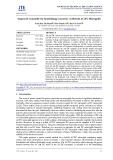
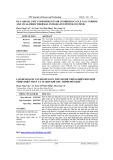



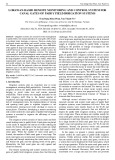

![Bài tập tối ưu trong gia công cắt gọt [kèm lời giải chi tiết]](https://cdn.tailieu.vn/images/document/thumbnail/2025/20251129/dinhd8055/135x160/26351764558606.jpg)




